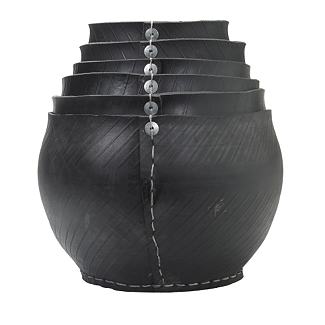
Here is something that I believe a lot of people were expecting to come along eventually. We have the fluorescent light bulbs, but LED's get so much more light for how much energy is required to power them. So, naturally this seemed like the future for the light bulb.
High price and a strange color. No, we're not talking about a hairdo. Those are the two factors that have kept light-emitting diodes, or LEDs, from becoming a mainstream light source.
But that might change soon, said Zach Gibler, chief business development officer of Lighting Science Group, which plans to announce distribution deals with major retailers for its LED bulbs that screw into a regular socket.
LED bulbs for household use have already been around for some time, but their success has been limited. The main obstacles have been that they cost more than incandescent lightbulbs and emit a sometimes unnerving color of light.
Lighting Science Group this week plans to introduce a portfolio of LED replacement white lightbulbs that it hopes will attract more consumer interest. The product line uses the same sockets as Edison bulbs.
According to Gibler, the bulbs perform well on a warmth and color rendering index--blue looks blue, yellow looks yellow, etc.--they have a long life cycle, and consume 80 percent less energy than incandescent bulbs.
Gibler believes 2008 could be "the year of LED" for residential use and lighting in general. The market potential is big, particularly considering that legislation will outlaw the sale of incandescent bulbs by 2012, he said. He compared the adoption of LED lights in homes to another lighting product, the flashlight.
"Three years ago you could hardly find an LED-based flashlight; today it's hard to find one that is not LED light," he said.
Lighting Science Group sells its products through wholesale stores and on its own Web site, but it expects to announce soon distribution deals with one or two retail chains to make the new LED bulbs more available.
At $40 to $110 apiece, the LED "in-screw" bulbs may still seem too pricey for a lot of consumers. But Lighting Science Group's pitch is that a 50 cent Edison bulb will last for 750 to 3,000 hours, while an LED has to be replaced only every 50,000 hours (or 10 to 30 years). The company says the cost savings is almost $740 over a lifetime due to much lower energy consumption.
Vrinda Bhandarkar, a research analyst at Mountain View, Calif.-based Strategies Unlimited, said she is impressed if the "bulky looking lamps" actually perform as well as the company says. But the price has to come down a lot before consumers--and not just businesses--start buying them, she said. For a proper light in the kitchen it would take at least four big bulbs, which would cost about $440.
"They will be used for retail display, hotel lobbies, for paintings that hang up high, and places where you need a high ladder to change lamps," she said.
Gibler, who has a lengthy career in the lighting industry and took on responsibility for business development at Lighting Science Group last year, believes the price for LED lights will come down as chips get cheaper.
"They will be half the cost in another two years," he said.
[Crave]


















































